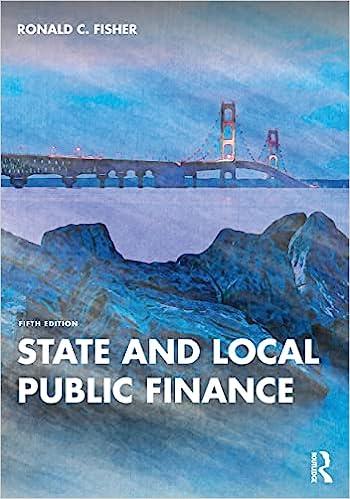The following data depict the fiscal characteristics of two school districts in a metropoli-tan area, each composed
Question:
The following data depict the fiscal characteristics of two school districts in a metropoli-tan area, each composed of identical single- family houses with one pupil per house:

The voters who have chosen to live in both districts desire and select $10,000 of educational spending per pupil and collect property taxes to finance it. Because B has small (low-value) houses while A has big (high-value) houses, the tax rate in B is much higher than in A.
(a) Would a voter in District B prefer to live in a big ($200,000) house in District A? Why?
(b) Would a voter in B prefer to live in a small ($100,000) house in District A? Explain.
(c) Suppose that there is a third school district to choose from with an equal number of big and small houses so that the average-per pupil value is $150,000. What tax rate is required in this district to spend $10,000 per pupil? If small houses also cost $100,000 in this district, are consumers of small houses better off here or in B? If big houses also cost $200,000 in this district, are consumers of big houses better off here or in A?
(d) Given your answers to (c), what do you expect will happen to the demand for big and small houses in this third district? What will happen to the prices of these houses in this mixed district?
(e) Characterize the equilibrium that would allow all three districts to exist simultaneously. What does this imply about the equity implications of the Tiebout process? Do you think it is fair if some communities require higher tax rates than others to provide an equal amount of government spending?
Step by Step Answer:






